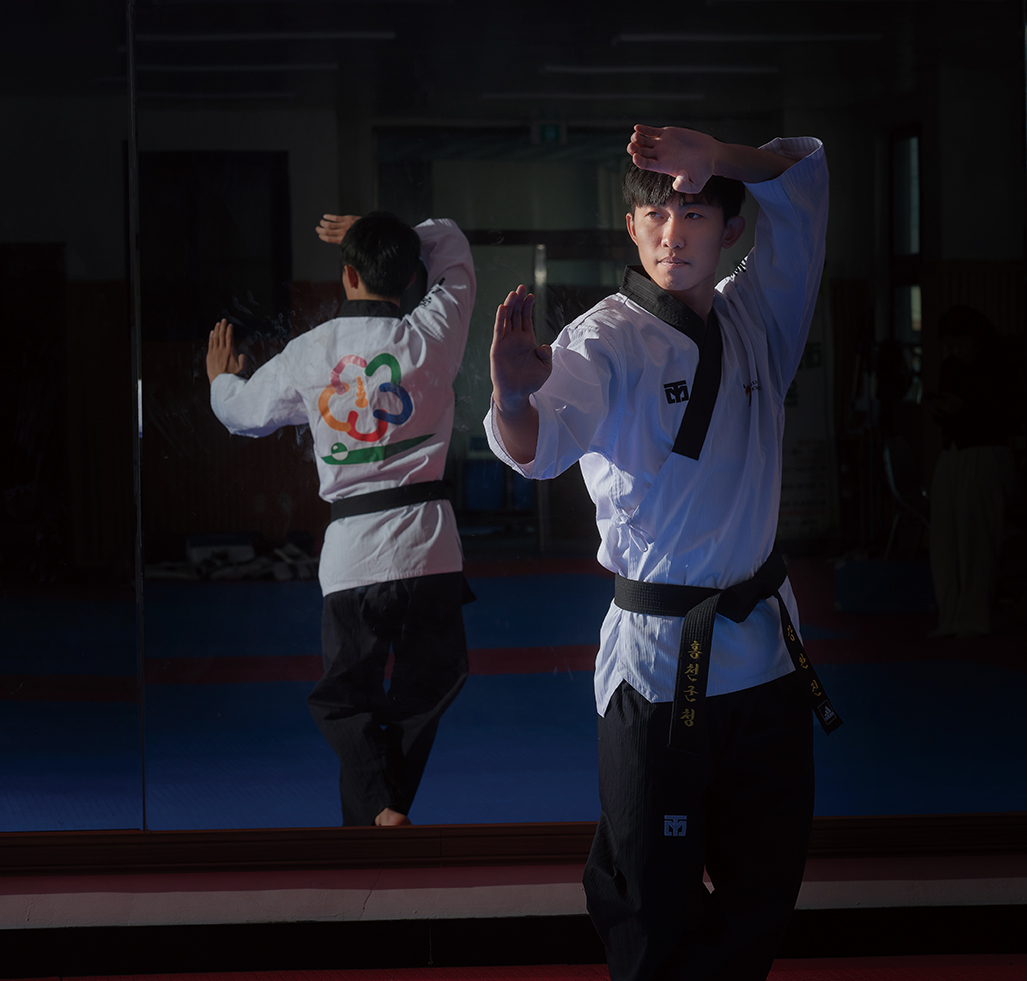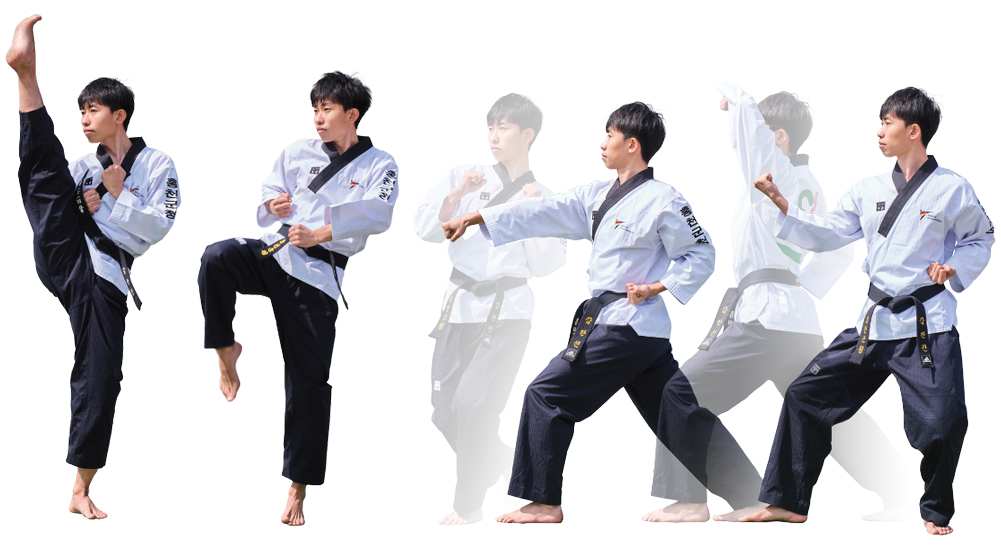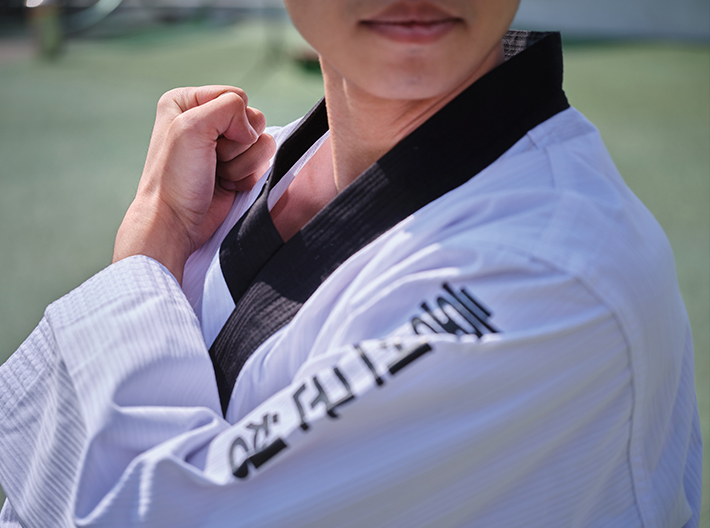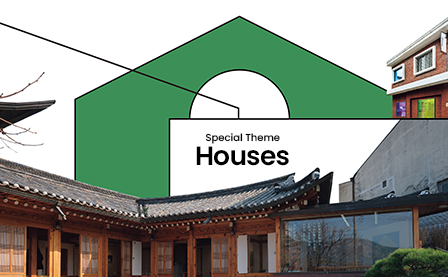April 2023

K-sports

Elegance in Strength
Taekwondo Poomsae Athlete Kang Wan-jin
Taekwondo is one of the most representative sports in Korea. Also, it’s a global sport, which has been included in the Olympic sports list for more than 20 years. However, Taekwondo performed in the Olympics is just one of the three legs, which make up Taekwondo. That’s because it consists of three categories. One of them is called Poomsae, which expresses how elaborate and beautiful Taekwondo techniques are.
Q. Could you tell me about yourself?
Hi. I’m Kang Wan-jin, a national Taekwondo Poomsae athlete from the Workplace Sports Team of Hongcheon-gun Office.
Q. How did you become a Poomsae athlete?
Taking a Taekwondo class was all the rage when I was a kid. I also enrolled in the class to keep up with that. When I first started practicing taekwondo, I focused on Kyorugi to get into college. One day my master said that a demonstration team would soon be formed and I could join, so I started juggling both Kyorugi and demonstrations. Afterward, I dedicated myself to the demonstration team. Then, the Korean SAT season had come up. While it was worrying me that it was difficult for me to get into college with my demonstration career, my master recommended Poomsae to me. That’s how I got into become a Poomsae athlete.
Q. Is Taekwondo divided into Kyorugi, Demonstration and Poomsae, right?
True. Kyorugi is one of the Olympic sports, which is why that is familiar to our fellow global audience. A demonstration is playing a role in spreading Taekwondo and promoting Korean culture around the world. There are two types of Poomsae in competitions: Recognized Poomsae and Freestyle Poomsae. Recognized Poomsae is a competition in which you arrange a sequence of those techniques and spar with an imaginary competitor. For Freestyle Poomsae, competitors arrange any kinds of Poomsae techniques they want to about one-and-half-minute-long music and perform it on stage.
Q. What kind of music is mainly used in Freestyle Poomsae competitions?
It’s officially prohibited to use music with political or religious messages in it. There are no regulations on them, but all competitors tacitly use music with no lyrics. When Freestyle Poomsae was introduced at first, ready-made music was usually used a lot, but now, there’s a tendency for competitors to make a request for musical composition, which can indicate characteristics of Taekwondo movements and an individual style of play.

Q. What competence matters the most to Poomsae athletes?
There are several important competencies, but I’d say interest and perseverance matter the most. The process of Poomsae training can be boring. You need to repeat the same movements every single day for at least six years, especially for Recognized Poomsae. The interest in Poomsae drives you to repeat that over and over again.
Q. You achieved the world’s first Poomsae Grand Slam. What do you think is the meaning of achieving the Poomsae Grand Slam in the realm of Poomsae?
When an athlete sets a record of winning several prestigious championships in a particular sport in the same year, they’re considered to achieve the Grand Slam. It’s the same in Poomsae. There are four major championships for Poomsae, such as the Asian Taekwondo Championship, the World Taekwondo Championship, the Asian Games and the FISU World University Games. Poomsae became an official sport for the first time in the 2018 Asian Games, and that’s when I won a team gold medal and was able to become an athlete who achieved the world’s first Poomsae Grand Slam.
Q. Poomsae became an official sport for the first time in Jakarta Palembang 2018 Asian Games and you participated in the men’s team competition as a member of the national team. How did it feel back then?
To be honest, I got so tense that I don’t remember how I felt back then. That was the first time I had blacked out. I turned pale and my field of vision has become as narrow as my fist. And later I realized that the competition had already ended. I’m sure what I had practiced saw the light of day. Above all else, since it was a team competition, I thought I was lucky to join a great team.
Q. You’re participating in a prematch for selecting the members of the national team soon for the Hangzhou 2022 Asian Games.
It has been five years since the last Asian Games. I think I’ve become even more mature than I was back then in both a physical and mental way. In addition, I joined the works team this time, and they’re offering me a systematic training, which does the trick a lot. If I keep preparing without frustration, I believe I can get positive results.


 View of all
View of all





